2015 Lamborghini Huracán LP610-4 photo gallery
Lamborghini. The name, the word, evokes many things in car enthusiasts all around the globe: Power, performance, speed, insanely wild designs, Lambo doors and more; all reasons why these cars are poster material. In my mind’s eye, I see the Miura when I contemplate this storied and revered Italian brand. That car was all Lamborghini, as was the Countach and all Lambo flagship vehicles that followed.
Although I loved my experience with the Gallardo a few years back, the hyper-popular “entry-level” Lamborghini (14,022 units sold around the world in 10 years) was very German in design and execution. The car’s supercar styling was subdued when measured against the Murcielago and Aventador. If that was a flaw, the new Huracán settles all arguments. In fact, there are no arguments against it.
Compared to Ferrari (its archrival), Lamborghini is all about letting your hair down, sporting tattoos and torn jeans, and being a badass. The cars from Maranello are for Armani, regal affairs, clean-cuts and the posh. A car from Sant’Agata is a rebel. How else do you explain the flashy colours, gravity-defying designs, and the noises? But, it’s not all about the Sex Pistols and riots; the Huracán can be just as urbane, or more, as any other supercar.
In fact, I’ve driven “lesser” cars that are not as civilized… Or is that uncivilized? The new BMW M3 and M4 come to mind, as do the Nissan GT-R and Dodge Viper. These four cars are nothing if not of the high-performance breed, and I found them all to be more difficult to live with and less pleasant to drive than the Lambo. Let’s settle a few things before going forward: The Huracán is far more expensive, and has the smallest trunk. There. On the upside, it’s a freakin’ Lamborghini Huracán!
The new baby Lambo replaces the aformetiomentioned Gallardo. No. Let me rephrase that: “What Gallardo?” If there was a considerable gap between the old Murcielago and Gallardo, that trench has now been completely filled. The new Huracán is every bit as exotic as the Aventador (minus the doors) and just as spectacular (or more) to behold as the new Ferrari 488.
There are no curves on the Huracán, only straight, sharp edges and cutthroat creases. The wedge shape is alive and well here and splices magnificently with the mesmerizing LED headlights. The low-slung roofline is scarcely taller than the final end tip of the car’s rear, and as wide and squat as it is, the Bobo almost looks flat from certain rear angles. All of the air intakes are not only functional, feeding air to numerous apparatuses, but they exist to scare Prius and semis alike.
There’s no doubt that the Huracán attracts loads of attention. One evening, the girlfriend and I parked the car in Old Montreal by the Port and were thoroughly amused by the passers-by and their varied reactions to the car. I’ll have a blog on that soon…
The main event stems from what lies beneath the clear rear hood: the splendid normally aspirated 5.2L V10. This heavily massaged lump generates 610 horsepower and 413 lb-ft of torque. In a time where big power numbers are common, the Huracán’s seem almost domestic and commonplace. Heck, the new Audi S8’s got the output numbers -- but nothing else.
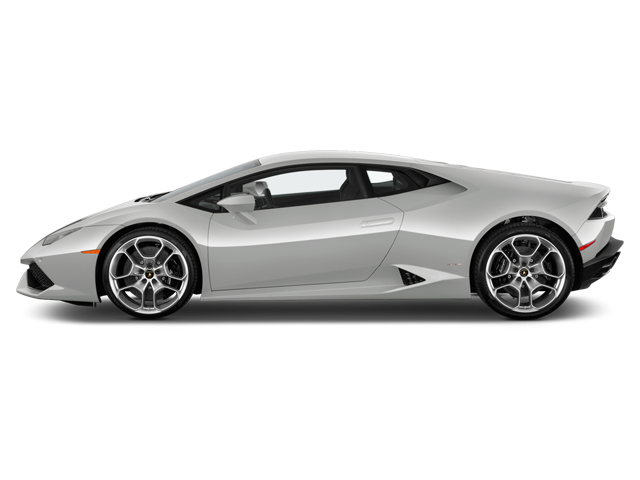
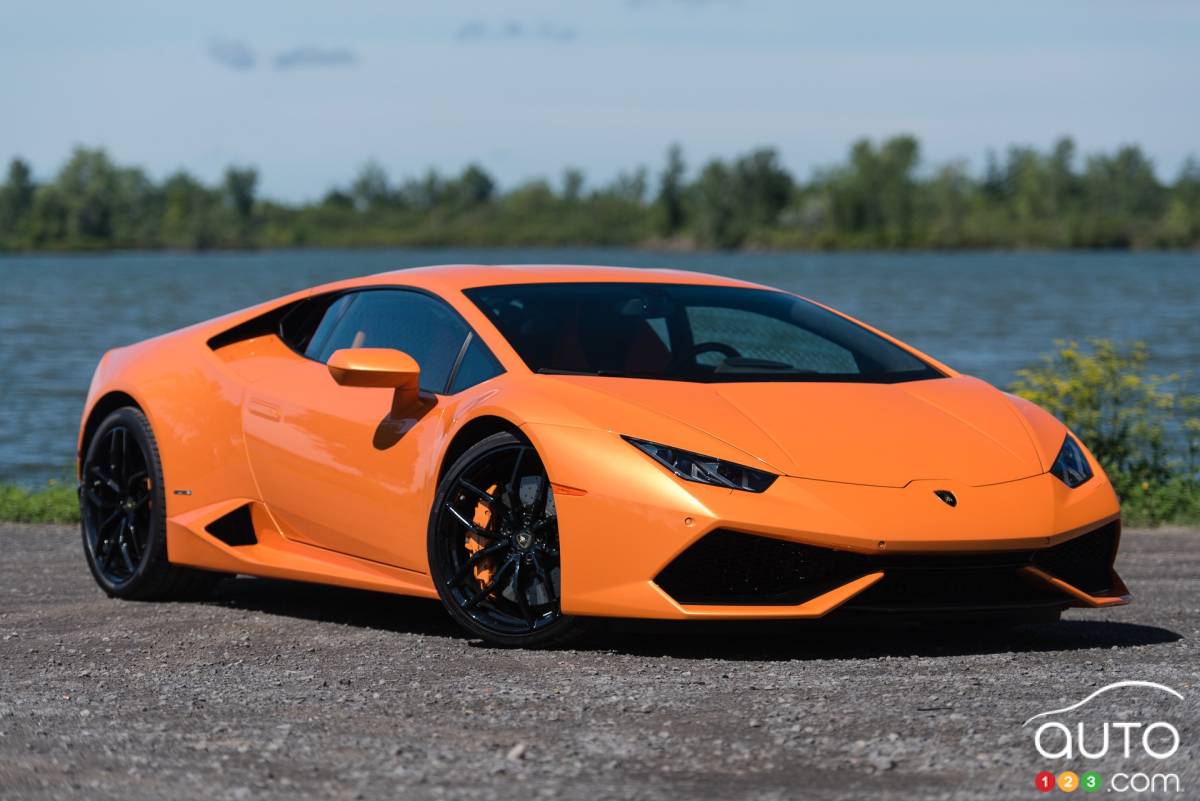
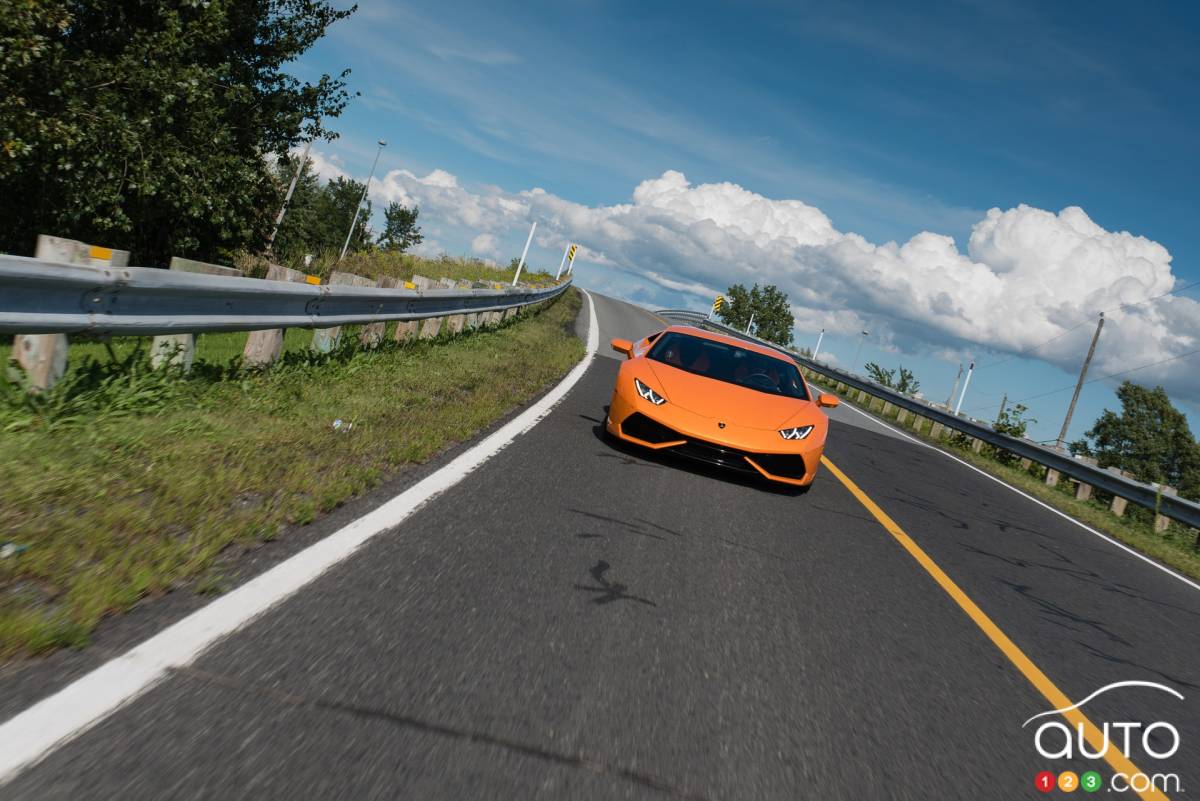
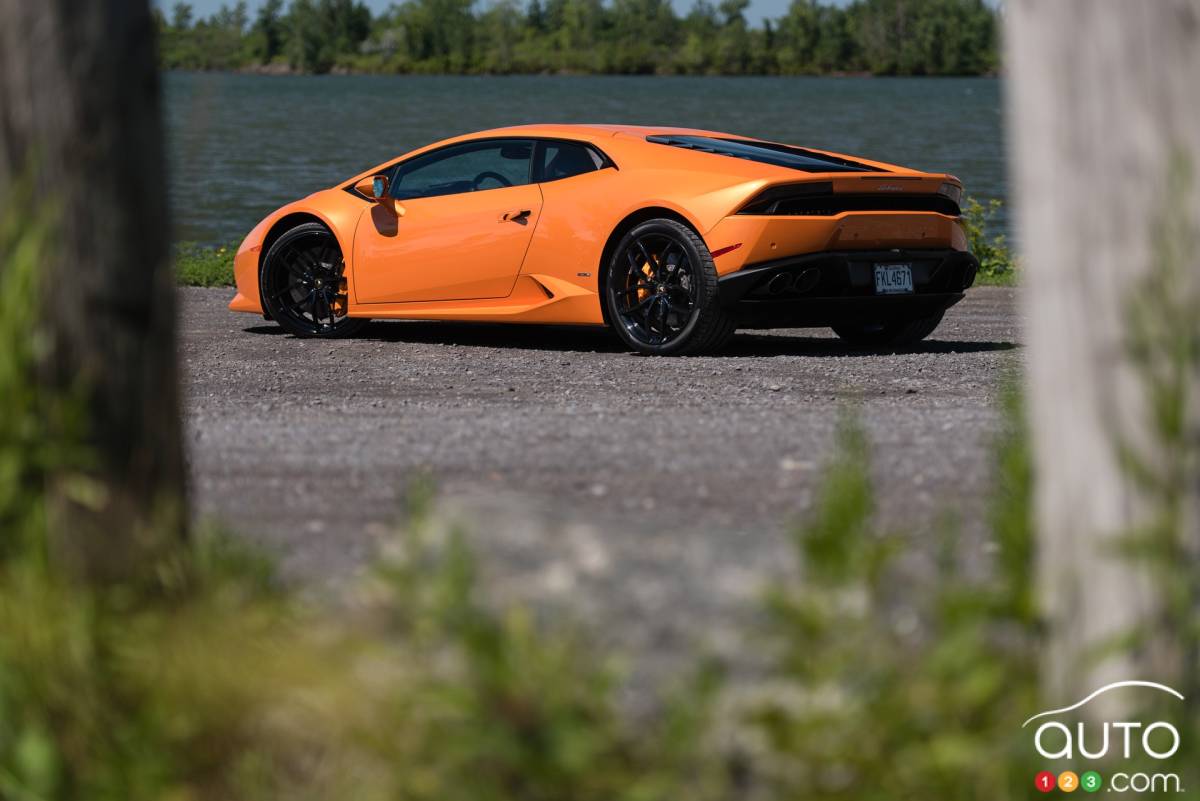
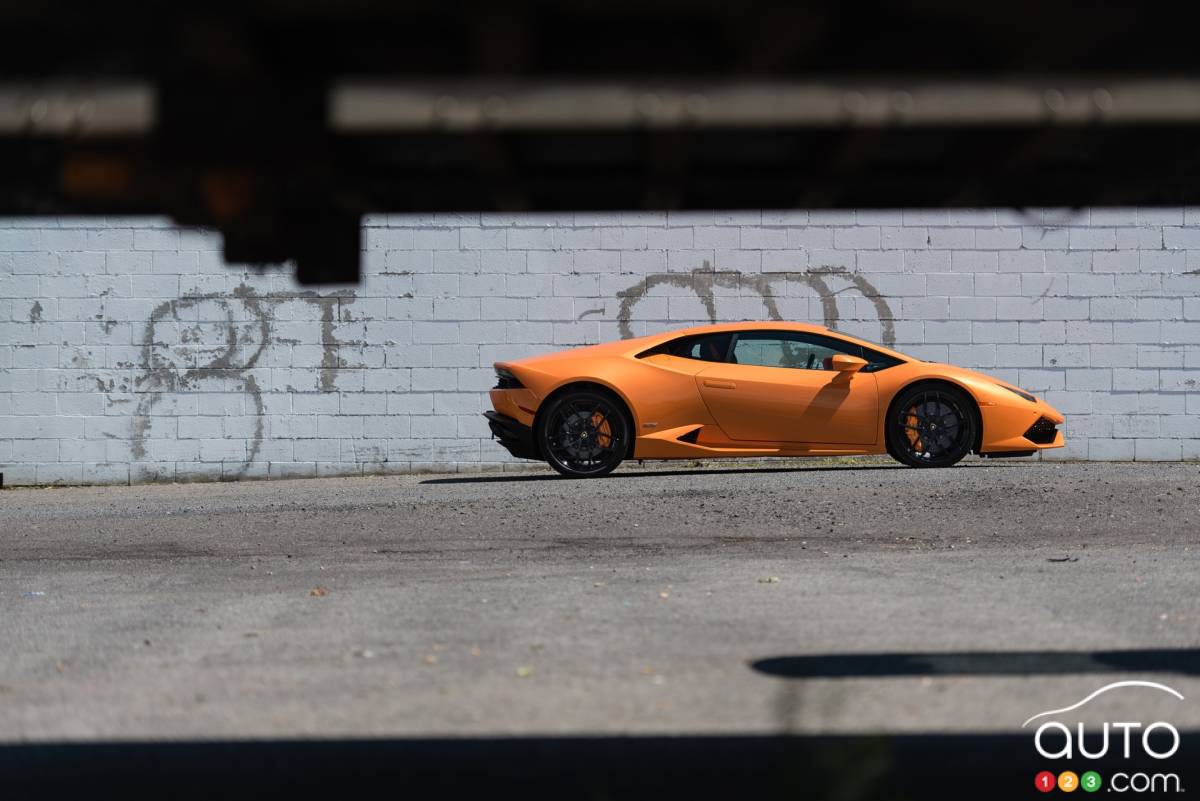
For all its flamboyance, the baby Lambo is tame or at least tameable, that is if you don’t let it get the best of you. The powertrain’s efficiency is alarmingly good where the car will reach out to the horizon and tug impossibly hard at it or, if you’re in no rush, have you move about at a perfect rate of speed to allow phone-toting teens to take multiple pictures of you as you cruise by.
The V10 is tremendous by its flexibility and eagerness to rev itself off the tach’s range. Its redline is set at 8,500 rpm and from tick-over, it’ll blast its way to it in the blink of an eye. Below 4,000 rpm, the engine’s tune it very metallic and at sustained engine speeds, can become intrusive. However, beyond 4k a fuller, deeper sound comes into play thanks to flaps in the end pipes that open up under load. The melody is exhilarating and dangerously addictive. From behind the wheel, I knew full well I was at the helm of a supercar but it’s that sound, the hair-raising goose-bump inducing maniacal mechanical waling that tells the whole truth and nothing but.
From a standstill, the baby Bobo will crush the 0-100 km/h sprint in 3.2 seconds, all day, every day. The same goes for the 0-200-km/h dash; thanks to the AWD system, the 7-speed dual clutch box and the V10 that mark goes by in 9.9 seconds. Top speed? More than 3.25 times enough to get you a speeding ticket on a Canadian highway. Numbers tell a superb story, as they always do, but to experience the forward thrust is something else.
Acceleration takes on a whole new meaning in some of today’s supercars. A few years back, we launched (without launch control) a 2011 Porsche 911 Turbo S to 100 km/h is 3.18 seconds (rated at 2.8…) and I completed the sentence with “quite nearly swallowed my tongue each time” after I nailed the throttle. But despite the speed and the g-forces, the 911 works everything out for itself. This is the case with Huracán. There are many non-secret secrets to its recipe.
The first is the engine; you need massive power. The second, and the reason more power is required, is to break inertia and carry the car’s weight. The baby Lambo’s guts have only 2.33 kg (5.13 lbs) to tackle per horsepower. The average sporty car may have a 6 kg per hp ratio and it’s still considered quick. The Huracán is balls out fast. Like face reconfiguration fast.
The second element is a good transmission. The new 7-speed dual-clutch “Lamborghini Doppia Frizione” (LDF) transmission is nothing short of masterful engineering. For the mundane, there’s “auto” and it’ll drudge along in traffic. For the more involved, there’s “M” where paddles are necessary. This is a real race-box where a synchronized tug on both paddles will drop the tranny into neutral. Yes… So much yes!!! From here, your next choice lies between STRADA, SPORT and CORSA. The latter mode is insane, the middle is mental, the first, crazy. Pick your poison.
Strada mode only means you have a few more moments before heading straight to the slammer. Even so, the ‘box dives headlong into each gear change as instructed by the driver. Tug right or tug left: boom, you’re there. This transmission has nothing to do with the dreaded e-gear of yore. Sport magnifies each input to within an inch of reason.
The third element is AWD. For over 20 years, Lamborghini’s been including four drive wheels with nearly all of their cars. The Huracán’s multi-plate clutch system typically splits power 30/70 front to rear, but can send up to 50% to the front or, alternatively, 100% to the rear. Said rear even includes a mechanical locking differential. In other words, the power will always find some traction.
The forth and final ingredient is low weight. The Huracán’s chassis is a hybrid aluminum and carbon fibre, and body components are made of aluminum and composite materials. Weight is the enemy, not only for humans… At 1,422 kg (3,128 lbs), the Lamborghini tips the scale at 45 fewer kgs than a 2016 Toyota Camry S that is powered by a 178 hp 2.5L 4-cylinder mill…
The Lambo’s chassis also aids putting the V10’s gusto to good use. The 42:58 weight distribution is all about putting most of the weight where most of the power goes. The four-corner forged aluminum double wishbone suspension keeps the car exceedingly flat regardless of speed and steering angle. Through some long sweeping on and off-ramps, the car refuses to budge, stuck to the road as though its life depended on it -- which it does, as does the driver’s.
A new option on the Huracán is the magneto-rheological damper control system. These synthetic oil/magnetic particle filled shock absorbers constantly vary their level damping. Under heavy steering, braking or accelerating, their job is to keep the car steady. By the same token, they are responsible for keeping the ride quality well within tolerable levels. I swear to you that the car is very comfortable for what it is.
The transmission’s ease of operation is one of two key elements in the daily-drivability of the Lambo; the other is this brilliant suspension. As a bonus, it includes a lifting system that raises the precious front spoiler, protecting it from sidewalks and the like.
Steering is instantaneously direct and telepathically responsive. The electromechanical rack-and-pinion power steering weighs up immediately with a fair dose of genuine feel that still filters out the harshest of road irregularities.
Then come the large carbon ceramic brakes that measure 380 mm in the front, 356 in the rear. Slight pedal deadness is present at the topmost portion of travel but from there, your teeth will leave a lovely imprint in the steering wheel or dashboard. Stopping power is immense and necessary when the car can reach 125 mph in less than 10 seconds!!
It is no more difficult to drop into the Huracán than it is to get out of a RAM Power Wagon. Getting out of the car, however, is just as physically demanding as it is climbing aboard the big truck. All efforts are immediately rewarded with firm, highly bolstered seats that blend the line between comfort and supreme support. Leg and headroom are good, better than I recall in the Gallardo. Truthfully, comfort levels are greater than one would expect in such a car.
Before me lies Lambo’s 12.3” TFT screen with a 1,440 x 540-pixel resolution. This home-theatre of an instrument panel can display three preset driving modes. The best and most important is the one that shows off an enormous tachometre front and centre. The large screen is also where all menu items appear including navigation, audio, and all car settings. It is recommended to navigate all of this when at a stop as the distraction level is high.
Materials, fit and finish are exotic as is the “start” button, which mimics Hollywood-style self-destruct buttons. Starting up the Huracán in the morning is much like setting off an atomic bomb, so Lambo got it right.
There’s a superb sense of familiarity that comes from the car’s cockpit. Its larger than life character troubles the mind into thinking that the Huracán is three times larger than it actually is. That fear took hold of me until I sat behind the wheel; I knew where I was. I’d been here before. The fact that the Lambo and the Audi R8 are siblings is a very good piece of news, however, no one would ever confuse the two supercars.
The 2015 Lamborghini Huracán LP610-4 is an extraordinary supercar that is fairly easy to live with. Although it commands respect, it’s not the same kind that Ferrari gets, it’s better. There’s a “cool” factor that comes with a Sant’Agata car that is absent in the Maranello cars. I’d have a Bobo over a 'Rarri any day if only because I’m not “serious” enough to own a Cavallino Rampante. Ask Deadmau5 about it.
A few things you’d like to know
Sales in Canada were roughly 50 units in 2013 and doubled to roughly 100 units in 2014. There are currently four dealerships in Canada: Vancouver, Toronto, Montreal, and since July 2, Calgary.
The Huracán’s base price is $262,947. With options (20” wheels, alcantara sportivo seats, sport exhaust package, and much more), my Arancio Borealis (mad orange) Lambo retailed for $317,847. I saved you the embarrassment of asking. You’re welcome.


